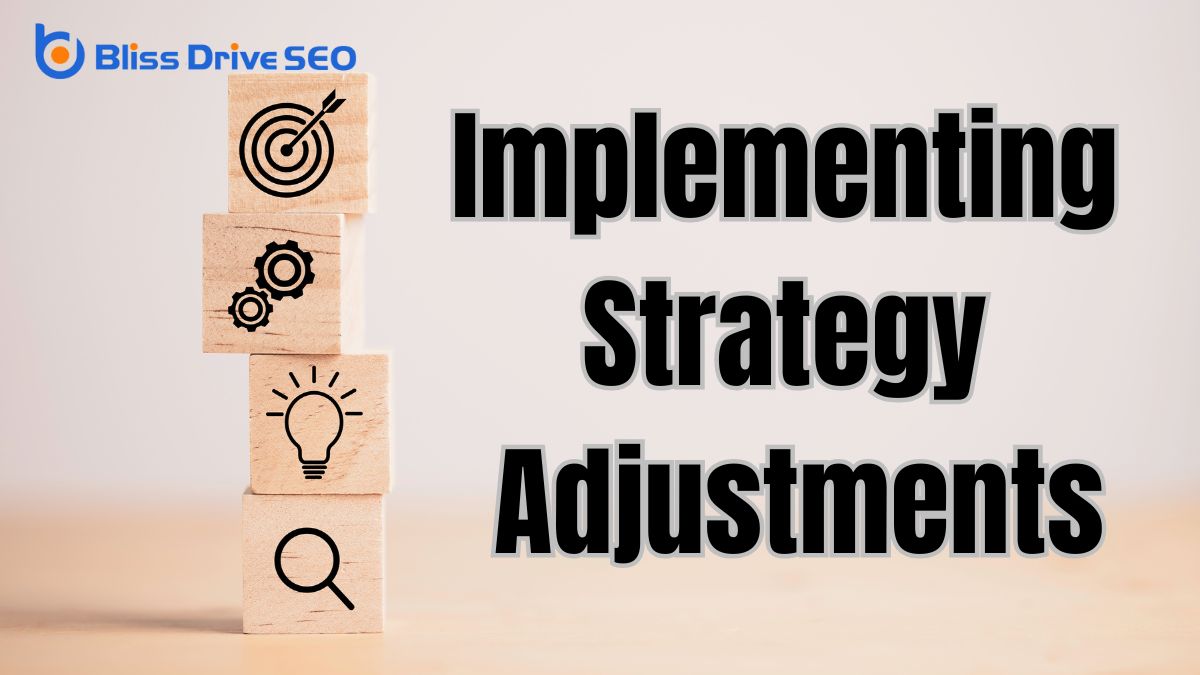Learn More About Us

When you think about competitor gap analysis in SEO, imagine uncovering hidden opportunities by examining the spaces between your SEO strategy and that of your competitors. It's not just about seeing where you stand but understanding why their keywordsWords or phrases that users type into search engines to find information., content, or backlinksLinks from other websites pointing to your website, crucial for SEO. might be outperforming yours. This strategic evaluation can reveal surprising insights that empower you to make smarter decisions to boost your online presence. But how exactly do you identify these gaps and leverage them for growth? There are some key steps that can guide you through this intriguing process.
Competitor gap analysis is all about identifying the differences between what your competitors are doing and what you aren't, allowing you to pinpoint opportunities for growth.
To truly understand this, imagine looking at your business through a magnifying glass while simultaneously keeping an eye on your competition. You're not just observing; you're actively analyzing their strategies, content, keywords, and overall performance. This process lets you see the gaps that exist between your current efforts and theirs.
You'll want to start by choosing a few key competitors to analyze. These are businesses or websites that rank highly in your industry or nicheA specific segment of the market targeted by affiliates to promote products or services..
Once you've identified them, dive deep into their strategies. Look at their content types, keyword usage, and even their backlink profiles. Are they doing something you aren't? Maybe they've got blog posts or videos that rank well, or perhaps they're using keywords you haven't considered.
Use tools like SEMrush or Ahrefs to gather data and insights. These tools can help you compare your website's metrics against those of your competitors.

By conducting a gap analysis in SEO, you can pinpoint opportunities that your competitors might be overlooking.
This process enables you to enhance your competitive strategy, ensuring you capitalize on areas where they fall short.
Embracing these insights allows you to strengthen your position in search engine rankings.
Uncovering SEO opportunities is essential for staying ahead in the digital landscape, and gap analysis plays a pivotal role in this process. By identifying the areas where your competitors excel, you can pinpoint the strengths and weaknesses of your own SEO strategy. This insight allows you to capitalize on untapped opportunities and make informed decisions that propel your website's visibility and performance.
To effectively conduct a gap analysis, start by analyzing your competitors' keywords. Look for keywords they're ranking for that you aren't targeting yet. These could be valuable additions to your content strategyA plan for creating, publishing, and managing content to meet business goals..
Additionally, examine their backlink profiles. Identifying high-quality sites linking to them but not to you can highlight potential outreach opportunities.
Don't overlook content analysisEvaluating content performance using metrics and analytics.. Evaluate the type of content your competitors are producing and how it engages their audience. This can reveal content gaps in your strategy, offering a chance to create fresh, compelling content that resonates with your target audience.
Finally, technical SEO aspects like site speed and mobile optimization should be assessed. If competitors outperform you here, it's an opportunity to enhance your site's user experience and search rankings.
A well-executed gap analysis is a strategic powerhouse in enhancing your competitive edge in SEO. By identifying what your competitors are doing right and where they're lacking, you can tailor your strategy to exploit these gaps. This means you're not just playing catch-up; you're setting the pace.
Imagine uncovering a keyword your competitors haven't optimized for or discovering a content angle they've overlooked. These insights can propel you to the forefront of search results.
You'll also gain a clearer picture of your own strengths and weaknesses. Recognizing areas where you excel allows you to reinforce those advantages. On the flip side, understanding your shortcomings helps you focus on necessary improvements.
This dual awareness fosters a dynamic and adaptable SEO strategy that keeps you ahead of the curve.
Furthermore, gap analysis encourages innovation. By constantly evaluating the competitive landscape, you're inspired to think outside the box and adopt unique approaches that set you apart.
This proactive mindset guarantees you're not just reacting to industry trends but actively shaping them.
Basically, a robust gap analysis transforms your SEO efforts from good to unbeatable.
To identify your key competitors, start by researching their strategies to understand what makes them stand out in search rankings.
Analyze their market positioning to see how they attract and retain their audience.
Discovering the right competitors to analyze is often the first essential step in developing an effective SEO strategy. You need to identify those competitors who are genuinely impacting your market. Start by considering both direct and indirect competitors. Direct competitors offerThe specific product or service being promoted by affiliates. similar products or services, while indirect ones might satisfy the same customer needs differently. Look for those who consistently rank high on search engine results pages (SERPs) for the keywords you're targeting.
Use tools like SEMrush, Ahrefs, or Moz to gather data on who's competing for your keywords. These tools can help you identify which websites are attracting your audience's attention and how they're doing it. Pay attention to their domain authority, backlink profiles, and overall SEO health. This data will give you a clearer picture of their strengths and weaknesses.
Don't just focus on the big players. Smaller competitors might've unique strategies that are worth exploring. Digging into their content strategies, social media presence and user engagementThe level of interaction and involvement users have with social media content. can reveal gaps in your own approach.
In analyzing market positioning, it's crucial to pinpoint your key competitors with precision. Begin by identifying businesses offering similar products or services in your industry. Look beyond direct competitors and consider those who might indirectly influence your market. Analyze who's capturing your audience's attention and why.
You can use tools like SEMrush, Ahrefs, or Google TrendsA tool to analyze the popularity of search queries over time. to gather data on who ranks for keywords relevant to your niche. These tools will help you understand who's competing for your audience's search queries.
Pay attention to competitors that have a strong online presence and a solid reputation. Check their websites, social media profiles, and customer reviews. This will give you insights into their strengths and weaknesses. Look for patterns in their content, SEO strategies, and engagementThe interactions that users have with a brand’s content on social media. levels. Are they leveraging certain platforms better than others?
Additionally, consider the market leaders in your field. These are companies that set industry standards and often have a significant influence on consumer expectations. By understanding their strategies, you can identify gaps and opportunities for your own business.
When analyzing keyword performance, it's crucial to identify which keywords are driving traffic and conversions for your competitors. By doing this, you can uncover valuable opportunities to improve your own SEO strategy.
Start by researching the keywords that your competitors rank for, using tools like SEMrush or Ahrefs. These tools can help you find high-performing keywords and give insight into their search volume and competition level.
Next, compare your keyword rankings to those of your competitors. This comparison helps you spot gaps in your strategy and identify keywords where your competitors have an advantage. If they're ranking higher for certain keywords, consider adjusting your content strategy or optimizing your pages to compete more effectively.
Pay attention to long-tail keywordsLonger, more specific keyword phrases that are less competitive and often more targeted. that your competitors are targeting. These often have lower competition and can drive more targeted traffic. Incorporating these into your strategy can help you capture niche audiences that competitors may be overlooking.
Finally, monitor the changes in keyword performance over time. SEO is dynamic, and keeping an eye on shifts allows you to adapt quickly. By understanding your competitors' keyword strategies, you can make informed decisions to enhance your own search visibility and drive more traffic.
After identifying the keywords that set your competitors apart, it's time to assess the quality of their content. This step is essential because content quality directly impacts user engagement and search engine rankings.
Start by examining the depth and relevance of their articles. Are they answering users' questions thoroughly? Look at the structure of the content; well-organized articles with clear headings and subheadings are easier to digest and more appealing to readers.
Next, consider the tone and readability of their content. Is it conversational and easy to understand, or is it filled with jargon that might alienate readers? You want your content to be accessible to a broad audience, so learning from competitors who strike the right balance can be invaluable.
Additionally, evaluate the multimedia elements they use. High-quality images, videos, and infographicsVisual representations of information, data, or knowledge intended to present complex information qu... can greatly enhance content engagementThe level of interaction and involvement that users have with content.. See how your competitors integrate these elements to complement their text.
Finally, pay attention to the frequency and consistency of content updates. Regularly refreshed content indicates an active effort to provide current information, which can keep readers coming back.
Learning from competitors' strengths in these areas can help you refine your own content strategy.
While diving into competitor analysisEvaluating the strengths and weaknesses of competitors’ SEO strategies., examining their backlink profiles is an important step in understanding their SEO strength.
Backlinks, which are links from other websites pointing to your competitor's site, play a vital role in search engine rankings. They signal to search engines that the content is credible and worth referencing.
By analyzing your competitor's backlink profiles, you can identify opportunities and strategies to improve your own site's SEO.
To effectively review these profiles, focus on the following:
Beyond examining backlink profiles, it's equally important to focus on technical SEOOptimizing the server and website structure to improve search engine crawling and indexing. factors to achieve an extensive understanding of a competitor's SEO strategy. Start by evaluating their website's speed. Faster loading times not only improve user experience but also boost search engine rankings. Use tools like Google PageSpeed Insights to see how your competitors' sites perform and identify areas where you can improve.
Next, analyze their mobile responsiveness. With the increasing number of mobile users, a site that's not mobile-friendly can lose significant traffic. Check how their site looks and functions across different devices. If they're excelling, consider adopting similar strategies.
Examine their site architecture. A well-structured site makes it easier for search engines to crawl and index pages, which can leadA potential customer referred by an affiliate who has shown interest in the product or service but h... to better rankings. Look at how they organize content, use internal linkingLinks that connect different pages on the same website., and whether they have a clear sitemap.
Don't overlook security. Sites with HTTPS encryption are favored by search engines. Check if your competitors have secure sites and verify yours, too.
Lastly, evaluate their use of structured data. This can enhance search visibility by providing more context to search engines. Consider implementing a similar markup if they're ahead in this area.
How can you transform insights into actionable strategies for growth? By leveraging the data found in competitor gap analysis, you can identify areas your competitors have neglected and capitalize on them.
Start by pinpointing keywords your competitors rank for, but you don't. Integrate these into your content strategy to attract more traffic. Additionally, examine their backlink profiles to discover linking opportunities you might've missed.
Consider the following approaches to leverage growth opportunities:

With a clear understanding of growth opportunities from competitor gap analysis, you're ready to implement strategy adjustments that drive results.
Start by focusing on areas where your competitors excel. If they rank higher for certain keywords, consider optimizing your content to target these terms more effectively. Use tools like keyword planners to refine your choices and guarantee they align with your audience's search intentThe purpose behind a user’s search query..
Next, evaluate your site's technical SEO. If competitors have faster-loading pages or better mobile optimizationDesigning and formatting web content to ensure it performs well on mobile devices., prioritize enhancing your site's performance. Tools like Google PageSpeed Insights can help identify areas for improvement.
Make certain your site is user-friendly across all devices, as this can greatly impact your rankings.
Content quality is another vital factor. Analyze the type of content your competitors produce. Are they using infographics, videos, or in-depth guides that you aren't? Consider incorporating similar elements into your strategy to engage your audience better.
Finally, don't overlook backlink profiles. If competitors have superior link-building strategies, reach out to relevant sites for guest posting opportunities or collaborations.
Building a robust backlink profile enhances your site's authority and can improve your search engine rankings markedly.
To boost your SEO strategy, immerse yourself in competitor gap analysis. By identifying key competitors and analyzing their keyword performance, content quality, backlink profiles, and technical SEO factors, you uncover growth opportunities. This process lets you see where you stand, adapt to market trends, and make strategic adjustments. Embrace this proactive approach to enhance your search engine rankings and increase your online visibility. Start closing those gaps and watch your online presence soar!
